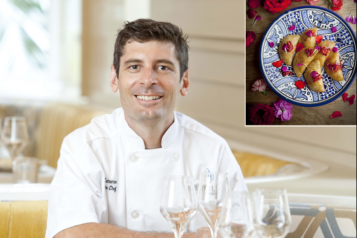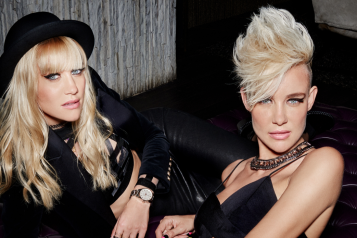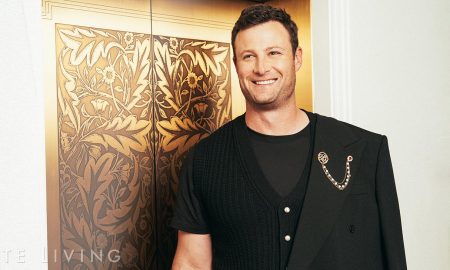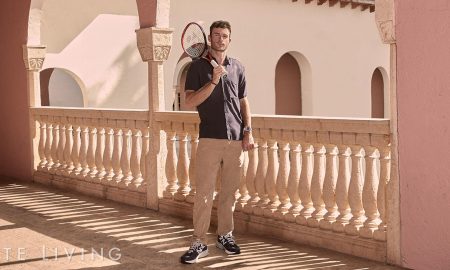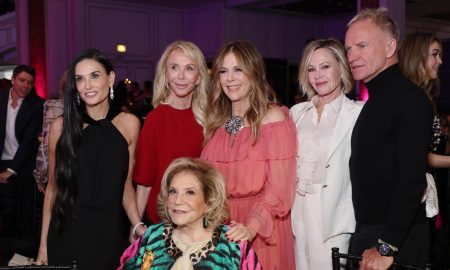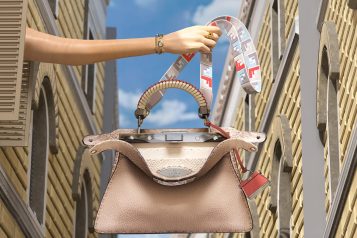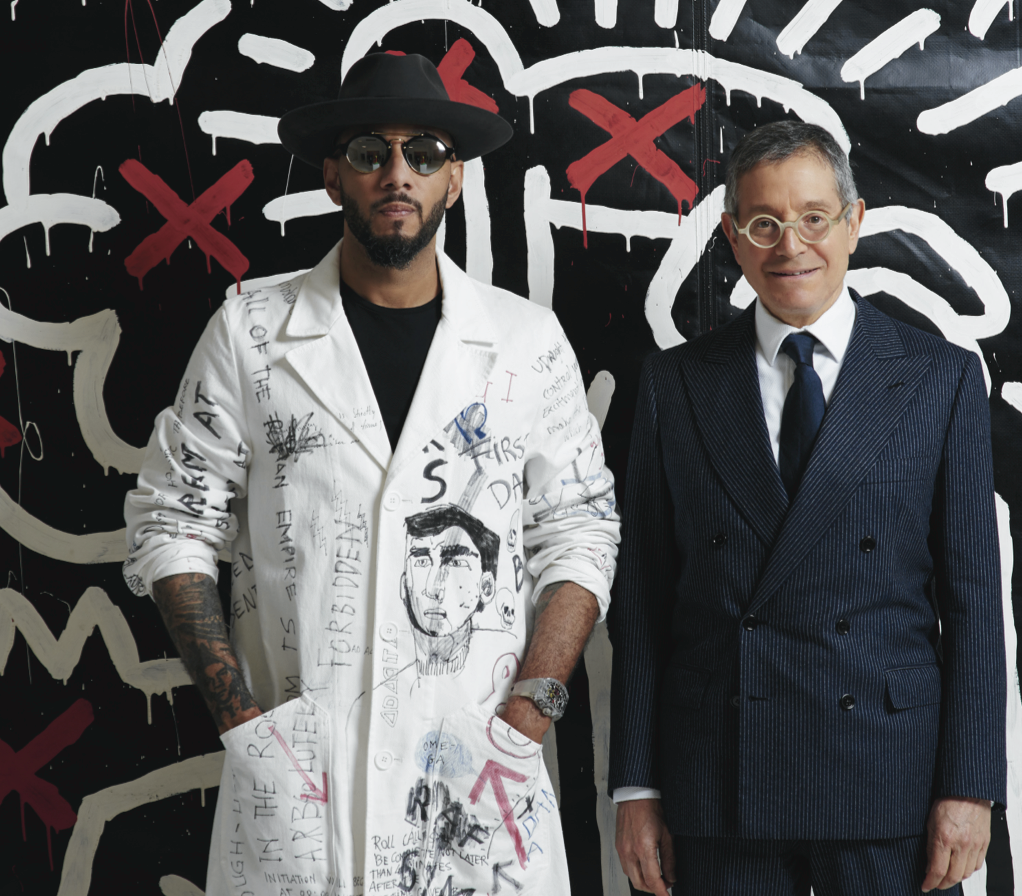
Kasseem Dean aka Swizz Beatz is jet lagged from a recent trip to China. He’s back home in New York City and has no time to rest, because there is too much to do. Between balancing his family life with his wife, Grammy-winning singer/songwriter Alicia Keys, basketball games with his son, hosting the Global Spin Awards (a major DJ expo), appearing on the “Today Show” and curating his impressive art repository, The Dean Collection. If that is not enough, Dean was recently named to the board of the Brooklyn Museum where he will open his Rolodex to help expand arts education programs, get financial support and build cultural engagement. Oh yes, and he’s preparing to launch a major art fair titled “No Commission” at this year’s Miami Art Basel. So sleep is not an option.
Dean’s foray into art began with his love of painting, but his children’s future also plays a major role. “I wanted to start this art collection for my kids, because I just feel like when traveling and going to different people’s homes and being around different cultures, you see a lot of things that are passed down to the kids,” Dean explains. “So I started building the collection ― and my kids still don’t really know The Dean Collection is for them. I don’t talk about it. It’s something that I do as a passion, and it’s something they’ll turn around one day and say, ‘Wow, Dad built a museum for us to take over.’”
The Dean Collection is massive, including major works by KAWS, Swoon, D*Face and Kehinde Wiley, to name a few. “And people are like, ‘Well, why are you collecting things so massive?’ And I’m like, ‘Because I want to collect museum-style,’” Dean explains.
“And I think that’s just my taste. If I was into something else I would go big, as well.”
But Dean always goes big. As Swizz Beatz, the prolific rapper and hip-hop music producer, he’s produced songs for Jay Z, Beyoncé, Nicki Minaj, Chris Brown, T.I. and his wife, Alicia Keys, and has sold 300 million albums worldwide. His passion for art and expanding culture may be his biggest mission yet.
Using the fearlessness of his South Bronx upbringing, the bravado of hip-hop and his incredible love of art, Dean will present a new and daring art fair during Art Basel called “No Commission” ― an unprecedented approach to both presenting and selling art. As the name implies, artists will be able to sell their work without having to pay a commission to an art dealer, buyer or gallery. “No Commission” will be held in the Wynwood District and is sponsored by the Bacardi family.
“I’ve always been inspired by artists who come out of street culture and artists who don’t ask anyone’s permission to make art,” says art dealer and curator Jeffrey Deitch of Deitch Projects. “They just do it.”
“I love the early Jean-Michel Basquiat/SAMO works on the street and Keith Haring’s. And I’ve befriended a number of the influential artists who were the innovators of the ‘Wild Style’ movement in New York in the late ’70s. And many of us are still friends. I am still doing projects with Lee Quinones, Futura, KASH, and I continue to work with and exhibit the work of Basquiat and Keith Haring. And I’ve been always looking for the new talents,” says Deitch.
Deitch is known for pushing the boundaries of how art is exhibited, often incorporating live performance, video and music and showing outside of the traditional confines of galleries in non-art-world outposts in New York like Red Hook and Coney Island. “I’m very interested also in artists who can speak to people beyond the inside art world,” he explains..
“Kehinde Wiley is a very good example of that, somebody who was quite sophisticated, MFA from Yale and very conversant about Old Master. But the work connects with contemporary culture, as well, and speaks directly to people who are not inside the art vocabulary,” Deitch continues. “A lot of the best artists who work on the street, that’s also one of their goals ―to communicate directly with a wide audience.”
Seven years ago, a mutual friend Craig Robins introduced Deitch to Dean. Robins, the president and CEO of DACRA, a successful company that combines real estate, art and architecture in Miami, and who is coincidentally hosting Deitch and Larry Gagosians’ upcoming figurative show “Umrealism” during Art Basel.
Deitch and Dean met, piqued each other’s interests and stayed in contact. Deitch recalls when he was the director of the Museum of Contemporary Art in Los Angeles, how Dean came to visit to see an exhibition at the museum titled “Art in the Streets,” which featured the works of Quinones, Haring, Banksy, Shepard Fairey, Fab Five Freddy, Mister Cartoon and others. Dean audaciously arrived at Deitch’s house in a bright green Lotus, but he was also humbly inspired and influenced by the maverick art dealer, curator and exhibitionist.
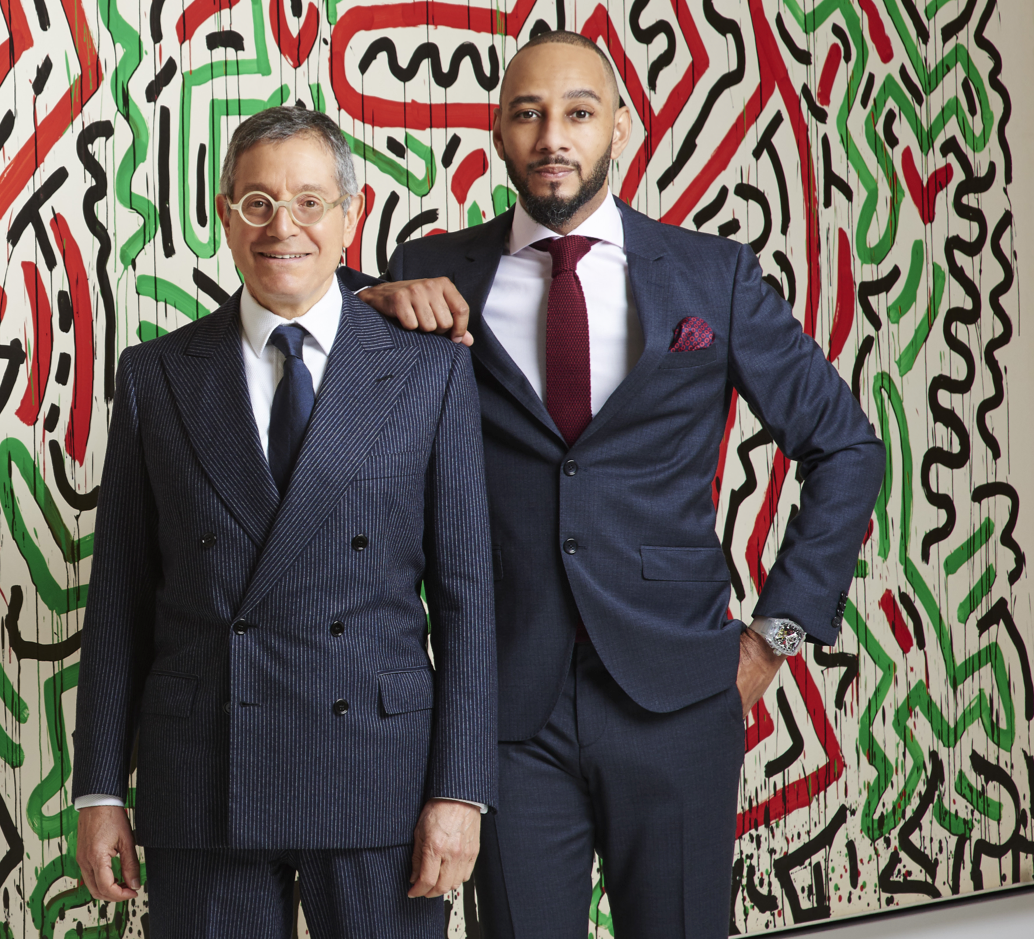
“Oh man. I was starstruck when I met Jeffery and I’m not starstruck very easy,” says Dean. “It’s just like knowing that this is a guy pushed a lot of levels to the next level in art. He was the person that if you had the craziest idea, you know to go to Jeffrey. He’s going to do the unsafe zone. And when you look at Jeffery you wouldn’t think he would do the unsafe zone.”
Dean elaborates on Deitch’s prowess, presence and power. “You know, double-breasted suit, quiet, laid-back. But Jeffrey, you could bring him the crazy idea, and he would know how to execute something that everybody’s scared of and make it happen. And I find a lot of that in myself. I’m really attracted to that. I’m really attracted to people telling me no or people feeling like it can’t be done or shouldn’t be done. I challenge them to change that, which we would lean into, which the reason of my presence at Art Basel this year,” he says.
Using Deitch’s provocative and often innovative avant-garde approach to exhibiting art was an important influence for Dean and “No Commission.” “The inspiration of it honestly just came from me just having a front row seat, a middle seat and a back row seat to the art world. Being a collector, being and artist, being a fan, being an observer, being a business man and being so passionate about it,” Dean explains.
“The galleries have a business plan, and they’ve got to keep their lights on, too. I understand that, but I was like, what if I’m in the unique situation to make those things go away for three days at an event where everybody’s celebrating art, let’s do a celebration that gives the artist booth space for free and let them keep 100 percent of what they make. It doesn’t exist,” Dean explains. “Every night we have a performance of an amazing music artist. I want my show to run from 2 p.m. to 2 a.m. The gallery where you can see the artwork, you can see the shows and it’s free for the people. Just a celebration of the art.”
Deitch supports this forward-thinking approach – especially in today’s evolving art market. “Well, it’s a very exciting idea, a great idea,” Deitch notes. “So, today in the art world there’s so much going on. There are so many good galleries, many ambitious art projects. You have to think big. So, to just, let’s say, to go to Miami and you have a small pop-up up with one artist, it’s very nice, but you’re not going to make much of an impact. So you have to think big. And I love that he’s thinking big, that this is a project that will command a lot of attention. And also, to do something important in art. You need somebody behind it, like Swizz Beatz, to inspire the whole thing.”
“And that’s the case of the ‘No Commission,’ that’s his own radical version of an art fair where it’s really about the artist, it’s for the artist or the artist all benefit fully,” Deitch continues. “So, it’s a very exciting model. And I like that it’s a combination of the support of the art, connection with the whole commercial system, but more important there’s also a social message and a goal that’s beyond that ― to do something important for society, to bring art and social issues together into a dialogue. So, it’s a meaningful project. It’s not just another commercial art fair.”
“Art is for everyone,” Dean chimes in. “You can find a piece for $20 that can speak to you. And so, that’s what made me start showcasing more affordable artists, new artists that a gallery and different people would never show because they don’t represent these people. I would find these different people and just ― so now when I’m showing you something, you might not be able to get it tomorrow, but you can make in your plans that one day, definitely touch 80 percent of the things that I’m showing you. And I think that that’s very important to let people know that there is hope and that the experience can be shared, wealthy, not wealthy, but shared if it’s your interest in general.”
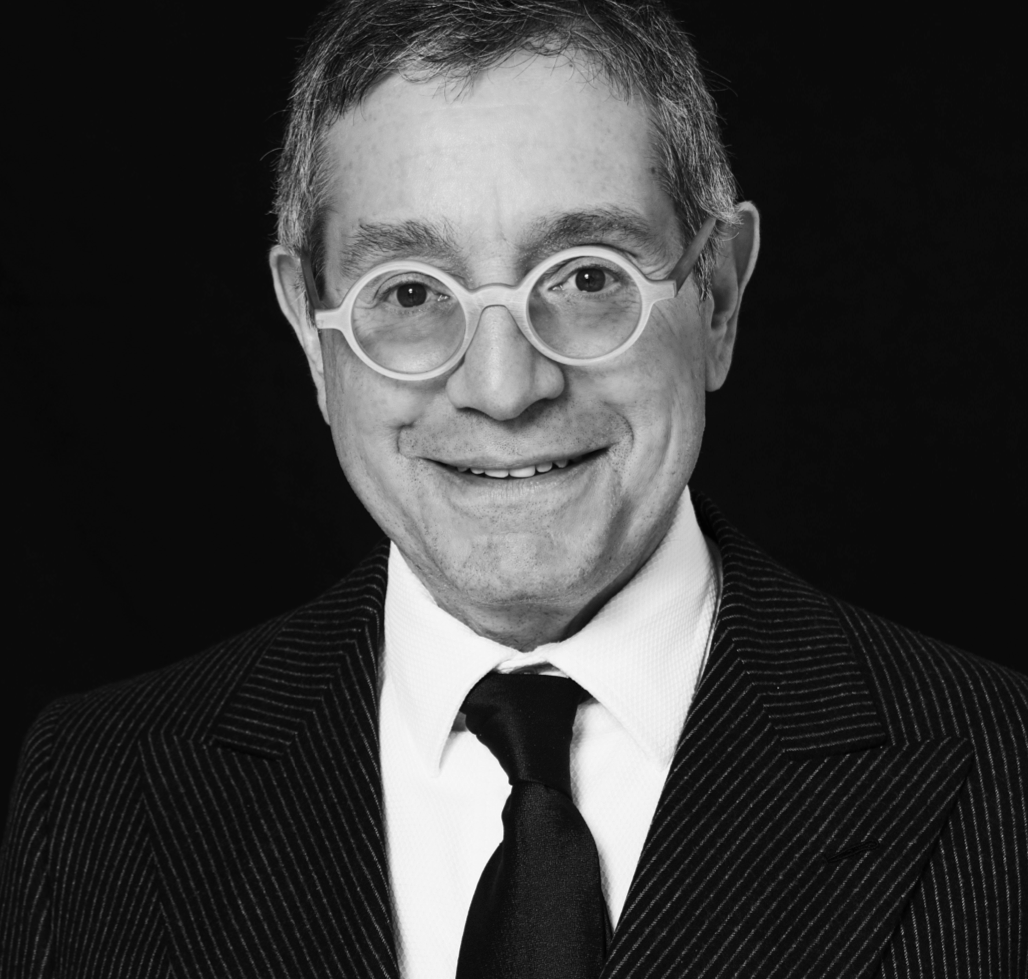
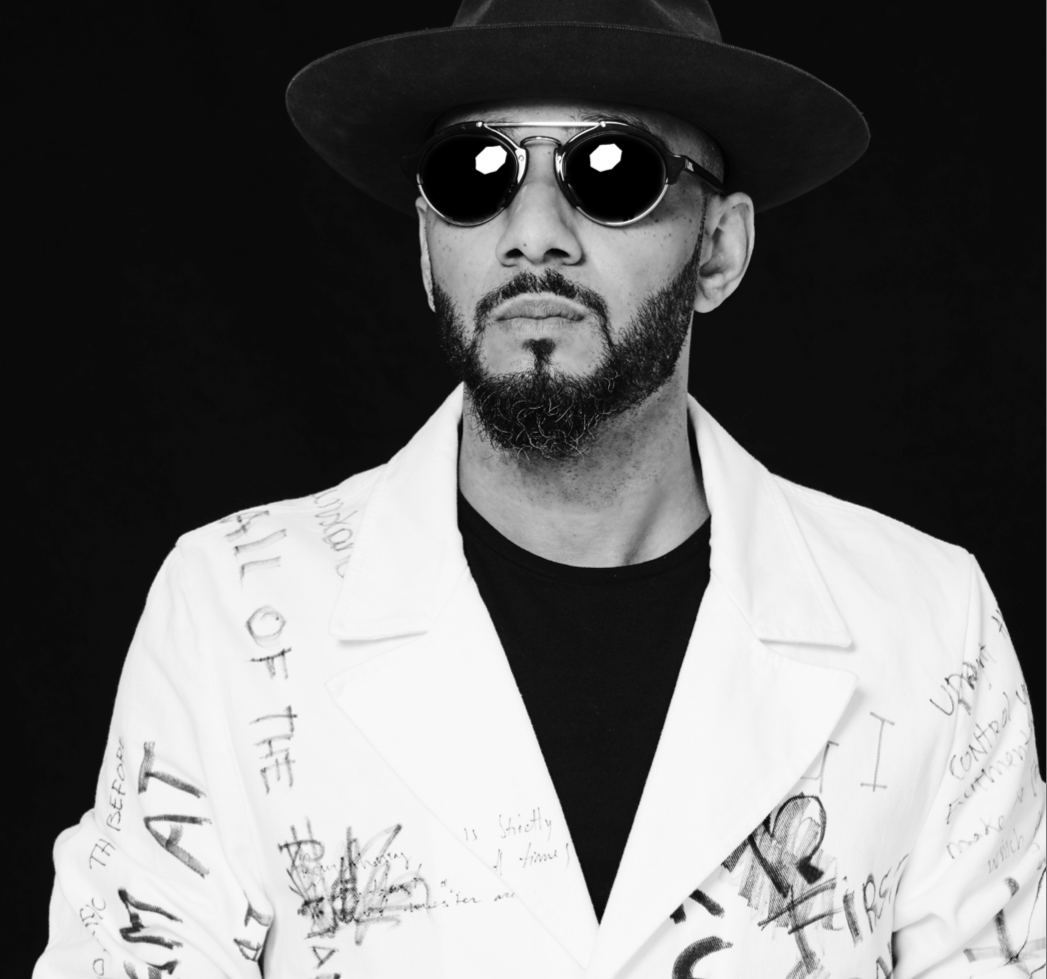
Check out the behind-the-scenes fun that went down during our cover shoot:
<







